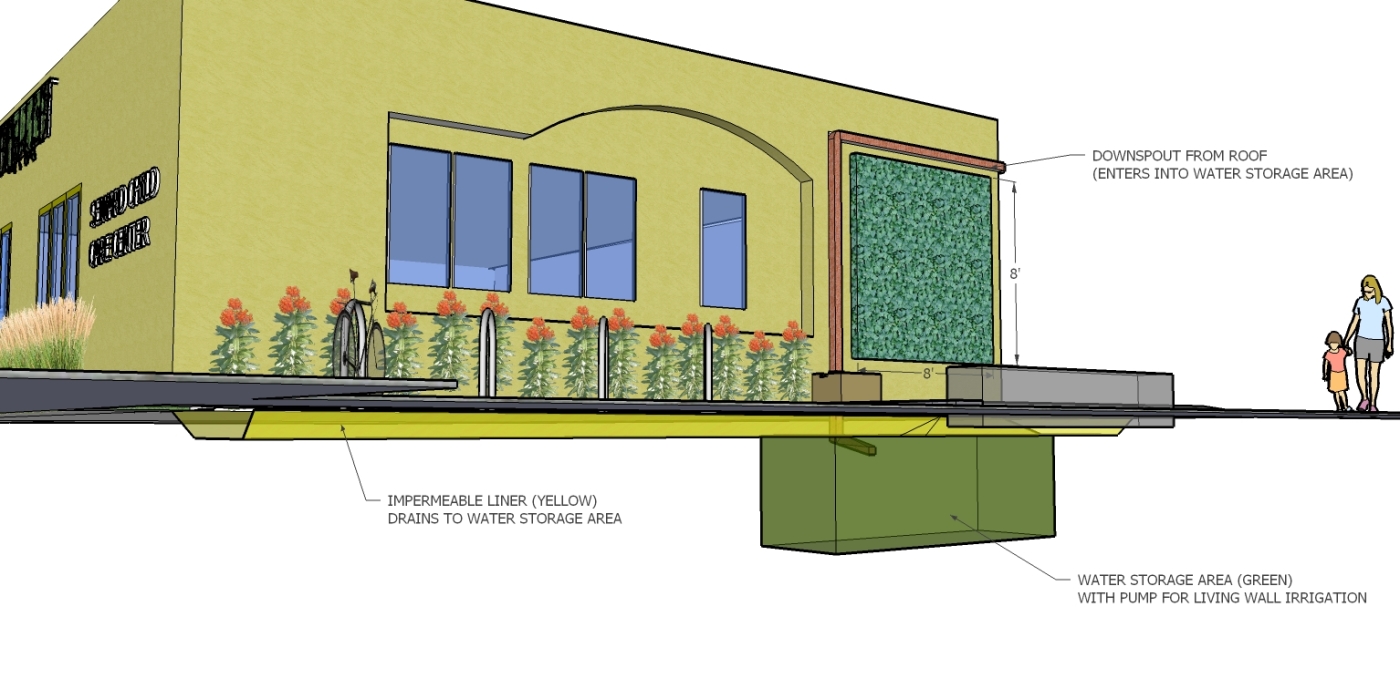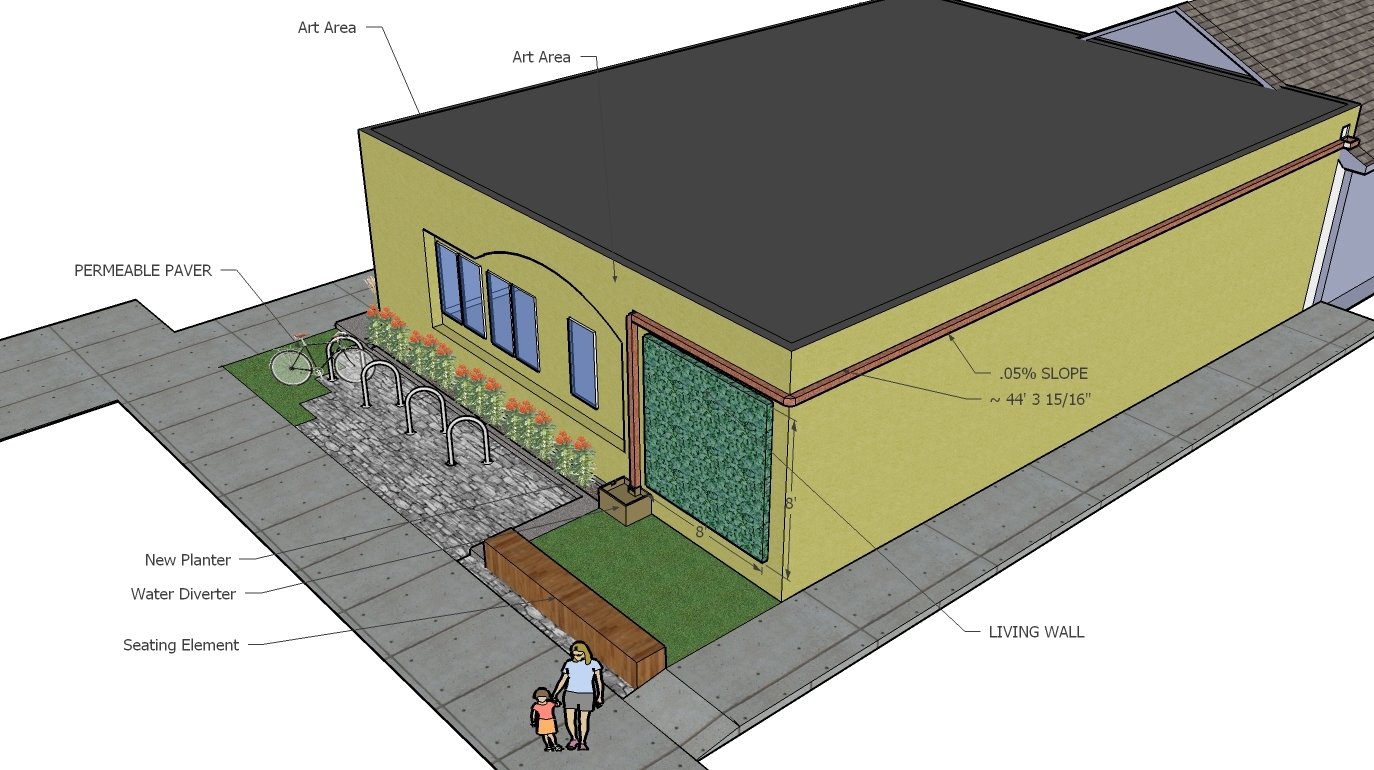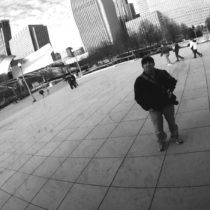Landscape Architecture for Landscape Architects › Forums › DETAILS & MATERIALS › TANKLESS UNDERGROUND WATER HARVESTING
- This topic has 1 reply, 12 voices, and was last updated 14 years, 10 months ago by
Mark Sanford.
-
AuthorPosts
-
August 17, 2010 at 2:38 pm #168148
 Andy SchillingParticipant
Andy SchillingParticipant

Hello fellow designers.
I am working on a small project where we are looking to capture and reuse rainwater infiltrating through
permeable pavements and off of a downspout. Instead of all the runoff
going to a below ground tank, we are looking at using an impermeable
liner below ground to direct the water to an aggregate filled structure
with a pump set in it. Has anyone tried this before? Please share your
experience, it would be greatly appreciated.Thanks,
Andy
Schilling
Landscape DesignerAugust 17, 2010 at 5:10 pm #168165Mark Sanford
Participanthttp://www.aquascapeinc.com/upload/RainXchange-Product-and-Applications-Guide.pdf
Check that out, its basically milk crates used to store the water…..
August 17, 2010 at 5:58 pm #168164 Andy SchillingParticipant
Andy SchillingParticipantThanks for your direction, Mark. I’ll check Aquascape, Inc. out.
Henry, I uploaded a couple views showing the concept. We are trying to have enough storage to keep a living wall system adequately irrigated, in Minnesota.
Thanks,
Andy
August 17, 2010 at 6:00 pm #168163 Chris WhitisParticipant
Chris WhitisParticipantI’m not sure how the system has worked out, but our local concrete association has done something similar. The cross-section is porous concrete over washed 57 stone with a pond liner/ membrane acting as the reservoir. The 3/4″ aggregate has ±40% pore space for calculating volume/ capacity. I’ll DM you his contact information and you can check in with him to see how it’s working.
August 17, 2010 at 6:10 pm #168162 Rob HalpernParticipant
Rob HalpernParticipantThis is off your topic (which is fascinating), but I find myself wondering why the Living Wall in this site.
From the elevations you posted I get the impression that the whole scheme is for the sake of the living wall, when there is adequate space for tree and shrubs, etc. Is form dictating function or the other way around?
Curious about the design intent.August 17, 2010 at 6:26 pm #168161 BoilerplaterParticipant
BoilerplaterParticipantMy initial impression is that it might make the engineer nervous, to have water stored that close to the foundation. The foundation might need extra waterproofing. What do you want to use the rainwater for?
August 17, 2010 at 6:29 pm #168160 Andy SchillingParticipant
Andy SchillingParticipantGood question. It is, in part, a case of form following funding…
The project is almost entirely funded by the watershed district (if this project receives an implementation grant). The district is as urbanized as one can get in MN and see this project as a demonstration for urban stormwater retrofit practices.
Also, the space is more limited than perhaps what the images reflect along with the client interested in maintaining sun exposure on this south facade, provide bicycle parking for the building, etc.
We are looking at our options to make the living wall put to the best use in our climate, including having wall hangers hung inside the building so it can be used for its air quality benefits during the winter.
August 17, 2010 at 7:18 pm #168159 Rob HalpernParticipant
Rob HalpernParticipantThanks, Andy. I figured there was a reason.
I expect doing a living wall in MN will be a bit tough. Frozen roots and all.
February 8, 2011 at 4:12 pm #168158 dermot higginsParticipant
dermot higginsParticipantRainwater harvesting system design and installation needs experience and training. Systems are designed to occupy minimum space especially in your garden. For this purpose, underground tanks are used. The pipe system is connected to the intended points of use. Pressurizing and pressure maintaining elements in the systems allow you to have constant water pressure in your rainwater pipe system. Rainwater harvesting system elements are made of durable materials and have a simple technical structure. These two features result in minimum maintenance requirements for the overall system. You may only need to clean filters from time to time and maybe some infrequent maintenance may be required for pumps.
February 8, 2011 at 4:40 pm #168157 Jordan LockmanParticipant
Jordan LockmanParticipantWhy go through the extra hassle of using making your porous pavers impermeable to collect water. Why not just have cheaper and easier to maintain concrete. Then collect the runoff directly into a cistern for rainwater harvesting. Seems like you are throwing out common sense for cliche green elements? You are creating a “Rube Goldberg” device instead of using a more straight forward design that does the job better and greener.
I have used a pit filled with aggregate for water infiltration and that worked well, I guess I am not sure why you want to use the aggregate pit instead of a standard cistern that can be cleaned out when it inevitably gets filled with sand and other debris?
February 8, 2011 at 4:53 pm #168156 Thomas J. JohnsonParticipant
Thomas J. JohnsonParticipantA) A green wall in MN!? What species do you intend to use? Regardless, you will have to tear it down every fall and rebuild it every spring. Based on your design you’re going to have a barren, ugly, grid as the focal point of your design for 8 out of 12 months.
B) Water storage that close to foundation is sketchy at best, especially in an area with deep freezes.
C) Putting a pump underground will be an expensive maintenance nightmare (i.e. tearing up the cap every time you need to access it.)
D) Placing the pump above ground will be noisy, unattractive, and most likely in violation of building codes because you don’t have enough setback in any one direction.
E) That gutter is fugly. (yes, that is a word combination, f-ugly)
F) Barring all the reasons this design is a bad idea… why not have the downspout empty into a trough with a grate (decorative) over it that takes the water to the water storage area? It would be easy to clean and more attractive.
G) What do you have against a below ground tank? I mean, impermeable is impermeable. Who cares if it’s a tank(reliable) or a jerry-rigged pond liner filled with aggregate? What is the advantage in having your “aggregate filled structure”, well, filled with aggregate? Less space for water? More crap to clog the pump?
H) If you’re still stuck on doing this, why not use the roof to store water and gravity to feed your green-wall? Why have a little green wall when you could wrap it around the corner and cover that entire barren wall?
I) Instead of having a doomed to failure green-wall / aggregate filled subterranean water storage system. Why not just go for a green roof? It looks like the perfect place for one… then you could put sculpture on the walls, get rid of the turf and do something different… (tree as sculpture with wall as backdrop / project shadows = nicer during winter)
OK – Grumpy old too much coffee man over and out…
February 8, 2011 at 4:59 pm #168155 Jordan LockmanParticipant
Jordan LockmanParticipantHow did this work out?
February 8, 2011 at 5:13 pm #168154mark foster
ParticipantTo expand on Mark’s point: the “pondless waterfall” people have done a lot with this concept, and we have used this technology on several rainwater storage projects. Here’s another type of pump chamber to look at: http://www.savio.cc/pond-products/C55/ .
The advantages to an aggregate filled system is the stone provides a lot of mechanical filtration protection for the pump–they are long-lasting and foolproof. The disadvantage is an approximate 50% reduction in the water volume due to the stone.
Other things to consider:
1. use non-treated rubber (most roofing rubbers contain anti fungals–you want to use the ones meant for ponds)
2. use non-reactive, ph-neutral stone, (we use river rounds, but they are not available/affordable everywhere)
3. make sure the pump and water delivery system is meant for grey water (that small particles can pass through it).
4. Aggregate size is important–too small and it will trap sediment, too large and it will not filter. We have found using mixed sizes of stone between 1 1/4″-3″ diameter to work best.
February 8, 2011 at 10:45 pm #168153 João Bicho e Joana Carneiro, LDAParticipant
João Bicho e Joana Carneiro, LDAParticipantTry to look at StormTank from ACO
February 8, 2011 at 11:16 pm #168152 Heather SmithParticipant
Heather SmithParticipantLooks like pondless water features I’ve installed. Very simple. I just dig a basin, lay liner down, place a pump in a permeable reservior, and fill with gravel. To increase volume, place structural objects like cinder blocks or drain tile in with the gravel.
A couple questions: How will you keep fines out of your reservoir? And how will you access your pump? Will you have to tear up the pavers each time the pump fails?
-
AuthorPosts
- You must be logged in to reply to this topic.


